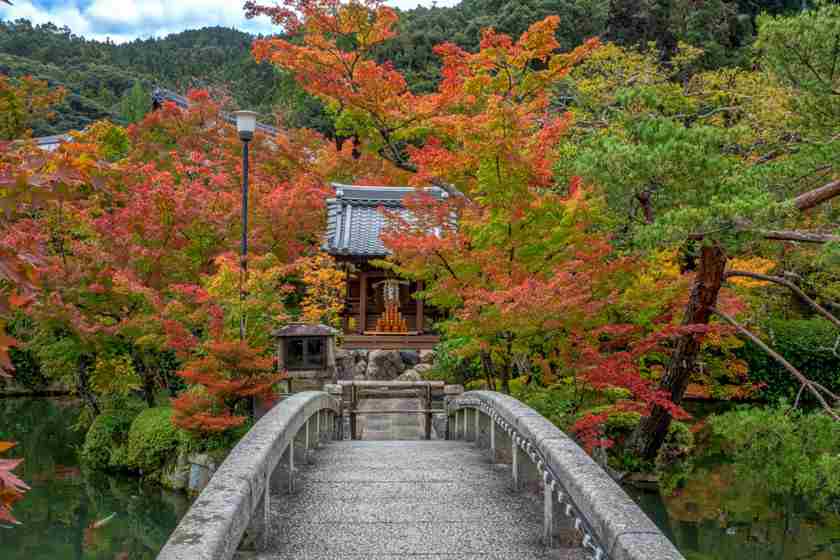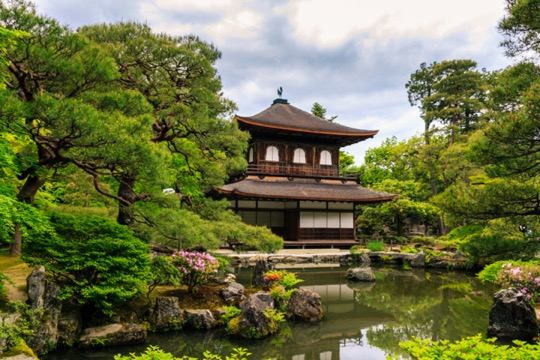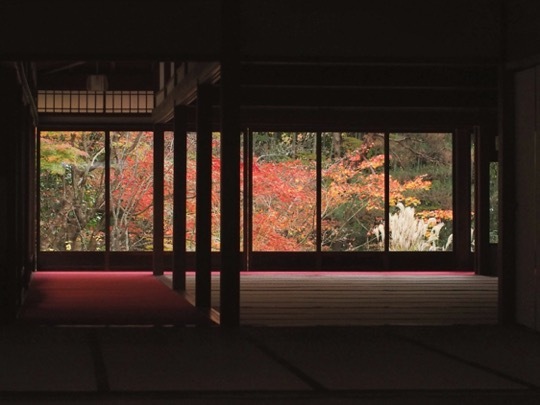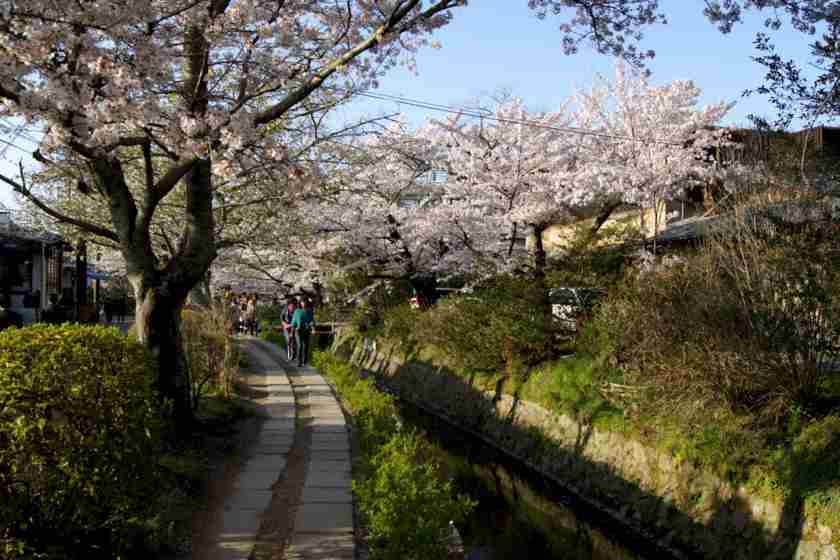Northern Higashiyama
Home to traditional arts and the influential Ginkakuji, Silver Pavilion

On This Page
Northern Higashiyama, nestled against the eastern mountains of Kyoto, is rich with Japanese heritage and serene temples. This district provides a contemplative glimpse into Kyoto’s historical layers, offering a break from the city’s liveliness.
As a cultural hub, Northern Higashiyama’s history is intertwined with the development of Japanese Buddhism and the arts. Among its many landmarks is the Nanzenji Temple, a key Zen Buddhist site established in 1291. The complex, with its extensive grounds and sub-temples, is centered around the Nanzenji Sanmon Gate, which was built in 1626 and offers panoramic views of Kyoto.
Another highlight is the Ginkakuji, or the Silver Pavilion. Although never completed in silver, it reflects the aspirations of shogun Ashikaga Yoshimasa when constructed in 1482. Ginkakuji is integral to Higashiyama culture, which nurtured the tea ceremony, Noh theater, and ikebana (flower arranging). The temple includes a distinctive dry sand garden and exemplifies the wabi-sabi aesthetic, emphasizing beauty in simplicity and impermanence.
The Philosopher’s Path, a stone walkway beside a cherry-tree-lined canal, offers a meditative walk between Ginkakuji and Nanzenji Temple. Popular during sakura season, it provides a picturesque experience.
Eikando Temple, also known as Zenrinji, is celebrated for its architecture, history, and the Amida Buddha statue’s unique backward glance. Dating back to the Heian period, its pagoda adds another scenic viewpoint.
Visitors will find cultural depth in the lesser-known temples and shrines of Northern Higashiyama’s neighborhoods. Seasonal displays add to the region’s charm, with spring cherry blossoms and autumn leaves framing the historic setting.
Neighboring the district, Okazaki Park and Gion enhance the area’s cultural diversity, with Gion known for geiko and traditional machiya houses. Northern Higashiyama’s historical significance is deeply woven into Kyoto’s cultural fabric.
Exploring beyond the popular spots in Northern Higashiyama reveals intimate moments with history, complemented by the nearby energy of Gion, showcasing Kyoto’s rich heritage.
Around Northern Higashiyama
Highlights around Northern Higashiyama
Eikando Temple
Experience the Zen spirit amidst autumn leaves at Kyoto’s Eikan-do
Ginkakuji
The Silver Pavilion: Reflecting the Artistic Splendor of the Ashikaga Shogunate
Nanzenji Temple
Historic Zen Buddhist Sanctuary in Kyoto’s Higashiyama Mountains
Nanzenji Temple Sanmon Gate
Nanzenji Temple’s Sanmon Gate, an Icon of Japanese Zen Buddhism
The Philosopher's Path
A walk through Kyoto’s history and cherry blossoms along Tetsugaku-no-michi.





